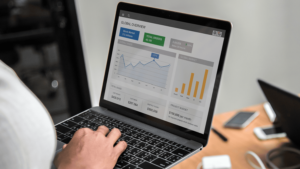Google Analytics is a necessity for any website owner.
As one of the most widely used platforms for website metrics, Google Analytics can generate detailed statistics showing the website’s traffic, traffic sources, conversions, and more. It provides the easiest way to optimize your efforts and improve your marketing campaign. Yet like most digital tools, it can be challenging to start and understand all the data provided. Here are some basic tips of working Google Analytics to improve your understanding and company traffic.
SEO (Traffic Sources > Sources > Search > Organic)
Since most businesses use SEO as the main source of traffic to their website, it is important to be knowledgeable on the uses of Google Analytics. Providing a list of keywords in ascending to descending order by the number of visits they receive, you can easily view patterns of visitors to get the most from your SEO efforts. You can quickly view the top performing keywords of your site in order to capitalize them, create content on those topics, and bring in more traffic. It also helps find unique keywords you may not be using but show the insight to how your visitors are landing on your site.
Content (Content > Site Content > All Pages)
Content is a big player in the marketing games these days. Using unique and entertaining content is being pressed into the minds of all business people but a great way to find how much exposure a particular product, blog post, page, etc is getting is through Google Analytics. It can show exactly how many page views each piece of content is receiving, the number of unique page views, and average time on the page. When you notice patterns related to the type or topic of pages, you can better provide for what your audience wants.
Bounce Rate
This is one of the most important parts of managing your website. The bounce rate can show you how much visitors are interacting with your page and how long they are staying on the page. The higher the bounce rate, the shorter the time they stay on the site. This time is a great indication of how visitors are reacting to a specific piece of content. It can also give you the knowledge of where content needs improvement in order to get the maximum attention it deserves.
Social Media (Traffic Sources>Social>Overview)
This tool helps to show insight into the specific networks you use to market your business and how they are performing. It tells you how many visits each network brings in, including the overall percentage in relation to all the networks. In general, it lets you know the impact of your social media campaign as a whole. Once you can see how well or poorly each network is performing, you can make decisions to improve and spend time on some or get rid of them all together.
Mobile Devices (Audience>Mobile>Overview)
With the recent information that globally there are more smart phones than feature phones, it should be on everyone’s mind to provide visitors to your website with a mobile friendly experience. With this Google Analytics tool, you can view how many visitors are coming to your site via which mobile device (i.e. desktop/laptop, smart phone, tablet, etc). It collects the information of how many overall visits come from each device, the pages viewed per visit, the visit duration and more. If you find you already have a large mobile audience, it may be in your best interest to invest in making or improving your site to be mobile friendly, web design responsive, or create an alternative mobile version.
In-page Analytics (Content>In-Page Analytics)
To get a good overall view of your site, look to in-page analytics. This provides a comprehensive study of the logic and preference of your visitors when they navigate around the site. Figuring out which links are getting the most clicks and exactly how the percentages break down can help you to make improvements to the subject of a low clicked article or the length of content on a high clicked page.
The more data you have on how others are enjoying you site, the easier it is to make adjustments the help to improve your site’s navigation. These changes ultimately will give visitors the best experience possible.



